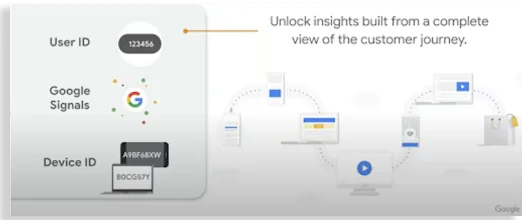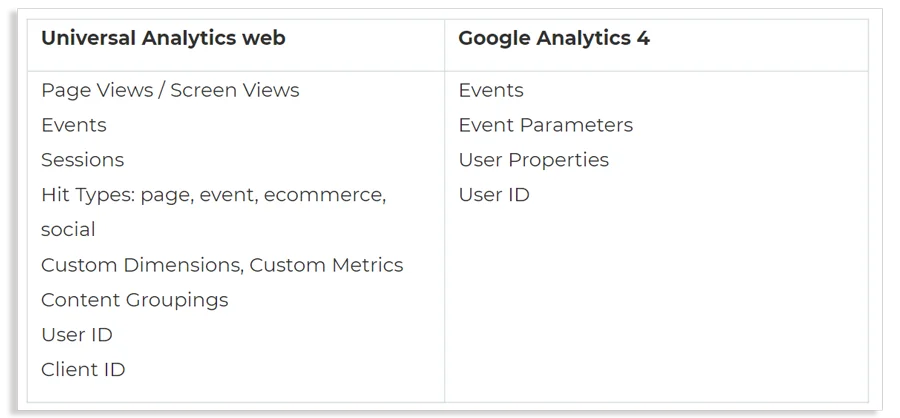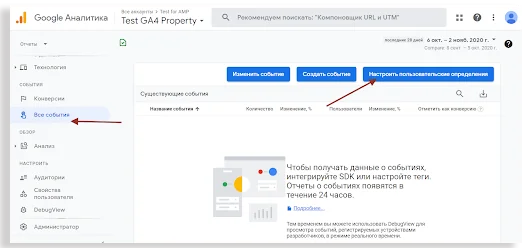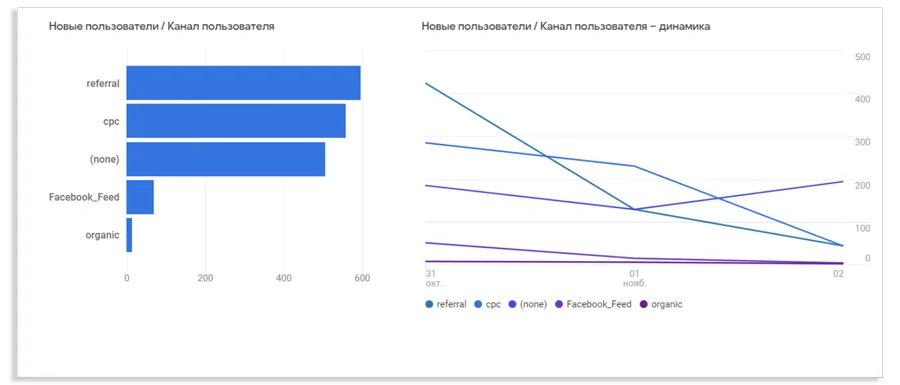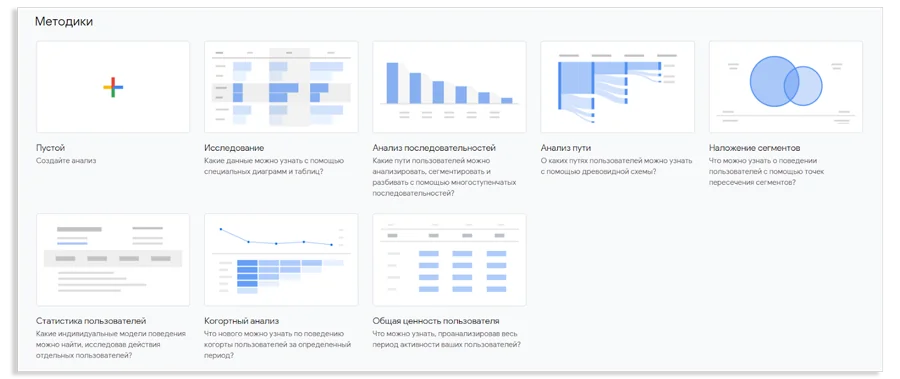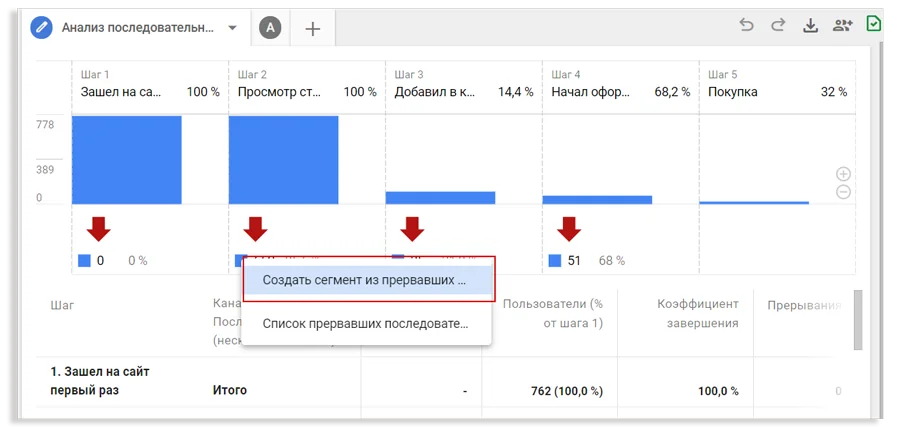Update or not? Testing Google Analytics 4
Author - Constantin Nacul
The new version of the analytics officially left beta in the fall of 2020 and, according to the developers, is designed to optimize advertising investments in the long term. In fact, Google Analytics 4 is an analogue of Firebase Analytics (an analytics system for mobile applications), but with additional functionality. The interface and logic of data accounting are borrowed from there.
What are the main advantages of Google Analytics 4 and how is the new version different from Universal Analytics? Who will benefit from the transition, and who should not rush?
Why exactly this name?
It's a good move in the sense that it positions the product as "the new GA" rather than as something exclusively for those with apps. But why Google Analytics 4? The name can be a bit confusing if you're not familiar with the evolution of Google Analytics. There was originally Urchin (#1), a company bought by Google in 2005. Classic Analytics (#2) was the next iteration, which was later replaced by Universal Analytics (#3), which is what you use now on your site.
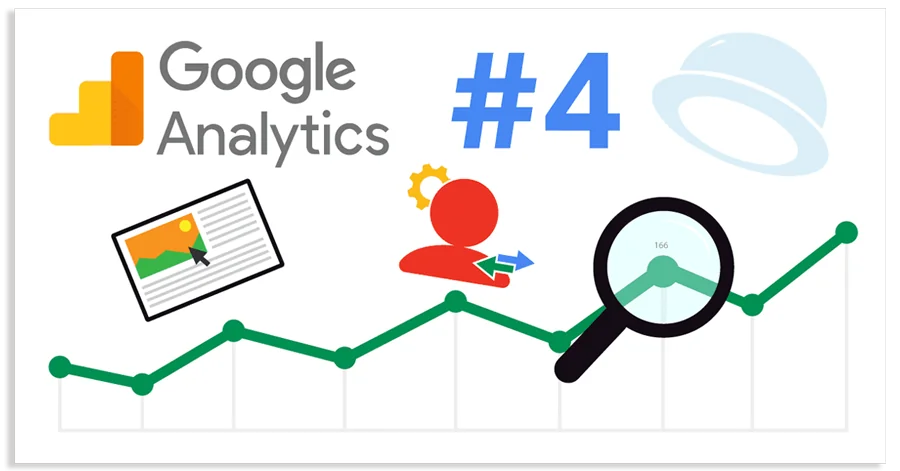
Google Analytics 4: What's New
This is a scalable cross-platform analytics that is built around events.
Previously, data tracking was based on sessions, an artificially derived indicator. In the new version, Google focuses on users, so it has combined all the analytics around events. Now you can track the entire user journey, that is, collect the same standardized data across all devices and platforms.
The new resource uses three levels of identification:
- user_id
- Google Signals
- device_id
“Google Analytics 4 unifies all analytics around events, which allows you to collect the same standardized data across all devices and platforms. You will have a set of identical events both on the site and in the application. For example, we have adding to the Cart both on the site and in the application. Tracking and customization is implemented in Google Analytics 4, you will be able to track this event as one for both platforms. This will improve the quality of the data, and it will be possible to get a single report along the entire user journey.”
The principle of calculating many web analytics metrics has also completely changed: bounce rate, session duration, page view time.
Machine learning and NLP (Natural Language Processing) functions are available to all users in the new version of GA
This functionality was partially present in the old counter, but few people used it. In the new edition, most likely, a more extended version will be presented. At present, the functionality is still under development.
Machine learning and NLP features are a key benefit of GA4. Now you can:
- Predict the likelihood of a conversion and create audiences for Google Ads based on these predictions.
- Find anomalies in reports. Here we are talking about notifications that were also in Universal Analytics. If any errors occur (conversions are not tracked, the conversion rate is calculated incorrectly), you will immediately know about it.
“Always pay attention to the Bell. These notifications contain a lot of useful information. We often receive requests to fix bugs, and quite often it is these notifications that help to detect them.
- Predict the likelihood of customer churn so you can invest more effectively in retaining them. The Google team plans to further develop this area by adding new predictive indicators. For example, ARPU, so that all users of a new resource can adjust their marketing strategy and increase their ROI using ML insights.
- Also, GA will now alert you to important data trends. For example, about products for which demand is growing due to changes in user needs.
Prioritizing privacy
Google says that in the future they plan to move away from cookies altogether and focus entirely on tracking by browser and mobile device identifiers.
“A lot of brands are facing the problem of tracking right now. For example, in the niche of banking. A very small proportion of users are tracked, this data is hard to work with and almost impossible to make decisions based on it.”
For this, the gtag.js library is already used, which works without cookies.
“The latest version of Universal Analytics just uses this library, but few people switched to it, since the library needs to be inserted into the site code. We do not recommend migrating to gtag.js and continuing to use the standard Universal Analytics, which is installed through Google Tag Manager."
You can also expect that in the near future Google will abandon Client ID and rely only on internal device and browser IDs, as well as a cross-platform ID that generates in CRM, i.e. User ID.
IP anonymization in GA 4 is set by default and cannot be changed. IP anonymization has not been tracked in GA before, but earlier it was possible to customize and track it, this cannot be done in the new analytics.
Seamless integration with Google tools
So far, the most advanced feature in this section is YouTube integration. Google is actively working to improve the quality of YouTube campaign scoring. For example, it tracks View-through conversions, which allows you to understand:
- How a YouTube Ad Campaign Affects Specific Engagement Metrics.
- How it affects the bounce rate, as well as certain events on the site (not necessarily conversions).
“In the current GA, the analysis of YouTube campaigns is not effective enough. In the new version, this will be a more functionally expanded version, and it will be possible to analyze YouTube statistics in the Analytics interface itself.”
Also in the new version of analytics, deeper integration with Google Ads is implemented. With it, you can build audiences, launch campaigns, and reach new customers with more relevant and useful offers, no matter what device they use.
“GA 4 has direct free data export to Google BigQuery. Previously, the export function was available only in the GA 360 version, and for a fee. In GA 4, it was made free, but now you can use Google BigQuery on a free basis for only three months, not a year.”
Differences between Google Analytics 4 and Universal Analytics
- What was before is reduced to a minimum and tracked by four main metrics.
- Google Analytics 4 analytics is not built around sessions, but around events. Since sessions are an artificial concept, Google is suggesting that it be abandoned. If you need session data, you can generate it yourself by working with raw data in Google BigQuery.
- There are end-to-end data collection settings for the entire site and those that change with each event. There are standard events that, when installed by GA, are basically tracked across all platforms.
- GA 4 provides built-in end-to-end reports by User ID. You don't need to create a separate view to use the User ID.
- In GA 4, by analogy with Firebase, there will be three types of events and their parameters:
– Collected automatically: e.g. pageview, sessionstart, viewsearchresults, scroll, file_download. Full list
– Recommended events are grouped by business area. Full list.
– Custom or any other events that you would like to implement and track. They fall under validity of GA4 limits.
“Now each event can have additional parameters. If earlier we set up an event, it had a category, an action, and a label, now the logic is different: there is an event, it has one name, but additional parameters can be passed with this event. For example, "Add to Cart", before it was a separate script, a separate parameter for each value. Now all this is collected under one event structure (one event, which includes: product name, product cost, size, color, and so on). Custom definitions (Custom Dimensions) are those parameters and indicators that are end-to-end for most reports and help meet the GA 4 limits.”
- In Google Analytics 4, there are no such concepts as category, action, and event label. For existing customizations and data being collected, these properties are mapped to custom event settings. If you want to see properties in GA 4 reports, then you need to register.
- Pageviews have become the pageview event. Views used to be views, now it's a pageview and with each pageview, preset parameters are passed. This event is collected automatically if you have implemented gtag.js "config" fragment.
- There will be 4 sessions in GA reports, but they will be counted differently than in Universal Analytics:
– The session is initiated by the automatically collected session_start event.
– Session duration is the interval between the first and last events.
– Interactions are recognized automatically (no need to send an interaction event).
– Late hit processing timeout is 72 hours (versus 4 hours in UA Properties).
“If you compare the number of sessions in the GA 4 report and Universal Analytics, you may find that there are fewer sessions in GA 4. Because hits that were sent after the session ended can be assigned to the correct session within 72 hours. Accordingly, session reports will take longer to generate. In GA 4, it is not possible to adjust session duration."
- User parameters and indicators. In order for Custom Dimensions & Metrics to get into GA 4 reports, they must be transferred to a new resource in accordance with Google rules. While hit and user level parameters have GA4 equivalents, there is no equivalent for session level parameters. Alternatively, you can define them at the hit level. To use custom product level definitions, they must be added separately. How this will work is still unclear. The feature is still in development and there are no eCommerce reports that contain custom product level definitions.
“There used to be 4 levels of metrics focused on hits, users, sessions and products. Now their equivalents are: events and event parameters, custom properties, sessions - not yet clear, products - eCommerce parameters that have not yet been implemented.
- GA 4 has a new feature called User Properties. These are definitions that fit a specific audience/specific user. For example: gender, city, sign of a new or returning customer, sign of a regular customer, etc. Properties that apply to specific users apply to all their behavior. Based on user properties, audiences are formed to personalize ads.
- New approach to data presentation. For example, this is how the Traffic Sources report looks like now:
- New custom report builder. The menu item My Reports as such no longer exists. Instead, they added a promising Analysis, which consists of two tabs: Analysis Center and Template Gallery. Also, report types were replaced by Methods.
- Sequence analysis. A funnel can be set manually if you have a set of events that can be used to form a funnel. First you need to set up the correct tracking, then generate such reports.
In the same report, you can create segments for any step in the funnel
- Create conversions in one click. Goals no longer need to be created manually, you just need to click on events and those that are tracked will become a conversion.
- New editor for creating segments and audiences. Now you can add a new segment from the funnel steps by clicking on the option from the menu.
Who will benefit from moving to Google Analytics 4?
You should already implement Google Analytics 4 if:
- Data collection on your site is organized through the Data Layer and Google Tag Manager.
- The fewer tags you have, the better. Minimal adjustments will need to be made. The syntax of the code and scripts that are embedded on the site is different from the previous version and if you have a minimum of them, it will be much easier to migrate.
- You actively use YouTube Ads and User ID-based remarketing. Implement new analytics in parallel with the previous version.
- You are actively using Firebase. Your team is familiar with the data collection logic of Firebase, as well as the data schema of the App + Web (Firebase) export tables in BigQuery. It is advisable to install new analytics in parallel with the old one.
“We recommend using both versions of GA resources for now. Data will be collected from the moment of installation, so the earlier you install it, the more historical data you can accumulate. New analytics will not interfere with the old one + it will develop. In the end, everyone will gradually switch to it. ”
How to set up data collection for Google Analytics 4
1. Create and configure a GA resource 4. You cannot merge old data with a new counter, resources have different logic.
2. Add tracking code manually or via GTM. We recommend using the Tag Manager because it is more convenient and faster.
3. Think about what events and parameters you want to collect in the new resource type.
4. Use two resource types at the same time to compare how data is collected.
Note that:
- ONLY one Firebase project can be added to one GA 4 resource. If you already have a project in Firebase that is being tracked.
- at the same time, several flows from different applications can be configured into one GA 4 resource.
A source: Promodo.ua


